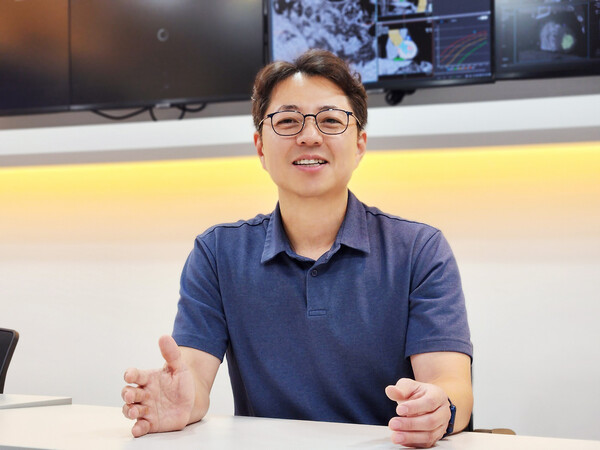With the increasing incidence of lung cancer in Korea, special attention is being focused on methods to enable early diagnosis of lung cancer to enable better prognosis for patients.

The increase in air pollution, smoking rates, and poor industrial working conditions have been cited as the main causes behind this phenomenon.
Drawing on his 13-year experience as an emergency medicine specialist at Inje University Ilsan Paik Hospital, Park Joon-min now serves as the executive director of clinical strategy at Coreline Soft, a medical AI software provider.
In an interview with Korea Biomedical Review in Seoul on Wednesday, he highlighted the value of AI in hospitals, specifically in enabling the early detection of lung diseases. He also elaborated on the company's strategies to expand the use of AI in hospitals.
“Without a clear return on investment (ROI), hospitals are often hesitant to pay for this software despite the proven clinical benefits,” Park said. “We are positive that we can secure reimbursement for our products given the clinical value our products offer.”
Reimbursement and technical challenges
Coreline Soft’s flagship product AVIEW Lung Cancer Screening (LCS), approved in 2016, is a medical imaging software that provides automated lung nodule detection and segmentation and analyses from low-dose CT chest images. It also detects chronic obstructive pulmonary disease (COPD) and cardiovascular disease. However, it remains without reimbursement, prohibiting the wider expansion of this technology.
“To persuade hospitals to implement AI solutions into their workflow, reimbursement plays a key role,” he emphasized.
Park explained that Korea already has a reimbursement policy that functions similarly to the U.S. healthcare system, to facilitate the introduction of medical AI technology into the healthcare sector. Those programs include Breakthrough Device Designation and the New Health Technology Assessment.
However, recently the New Health Technology Assessment has been heavily criticized by the industry for being overregulated and prohibitive for the quick introduction of innovative technologies into clinical practice, causing long delays.
Despite this, Park outlined a positive stance on the matter, “We are currently undertaking projects to secure reimbursement locally and are also conducting market research internationally.”
Although he noted there are some barriers, he specifically noted that there were bridging programs to enable the use of 3D bioprinting and AI in radiology so reimbursement does not seem like an impossible task.
Establishing synergy between doctors and AI algorithms
Still, Park advised the need to temper expectations.
He argued that AI has been proven to boost work efficiency and reduce the risk of errors in image analysis, but sometimes physicians expect perfection from the AI algorithm, leading to negative feedback.
“It is important to acknowledge these limitations and work synergistically with AI technologies to supplement these technical areas.”
In clinical practice, doctors are sometimes hesitant to implement AI into their workflows because false positive readings can lead to an increased workload.
Acknowledging the inevitability of the situation, Park advised physicians to exercise caution when using the algorithms.
“In order for the sensitivity of the AI algorithm to increase, false positives will also have a natural tendency to increase proportionally,” Park said.
A conservative approach should be used to consider the safety aspect of patients but went on to say that physicians will gradually be able to rely more heavily on AI’s decisions as it improves its performance from training on extensive data for diagnosis and treatment.
In the meantime, he advised physicians to use the algorithm as an aid to balance the possibility of false positives against the sensitivity of the algorithm.
He also mentioned that computerized tomography (CT) protocols can vary according to the CT manufacturers or hospitals leading to potential discrepancies from image analysis.
In this regard, Park noted efforts to address this issue by training the algorithm to encompass a broad spectrum of CT protocols and calibration technologies.
Future uses of AI in clinical practice
Park elaborated on how the company's algorithm ensures the interpretability of the results by employing a step-by-step process.
“We have embraced a heat map method wherein AI is designed and validated to first identify lesions and then proceed to measure these detected lesions in a sequential process to help facilitate the explanation of the generated results,” Park said.
Yet, despite the advancements in these AI imaging solutions to enable earlier diagnoses, there can still be a disconnect as many individuals lack the incentive to visit the hospital.
Accordingly, Park highlighted the potential benefits of collaborating with a Korean company collecting examination results and displaying them in applications. He emphasized that such collaboration could encourage regular health checks and enable users to better manage their health condition.

